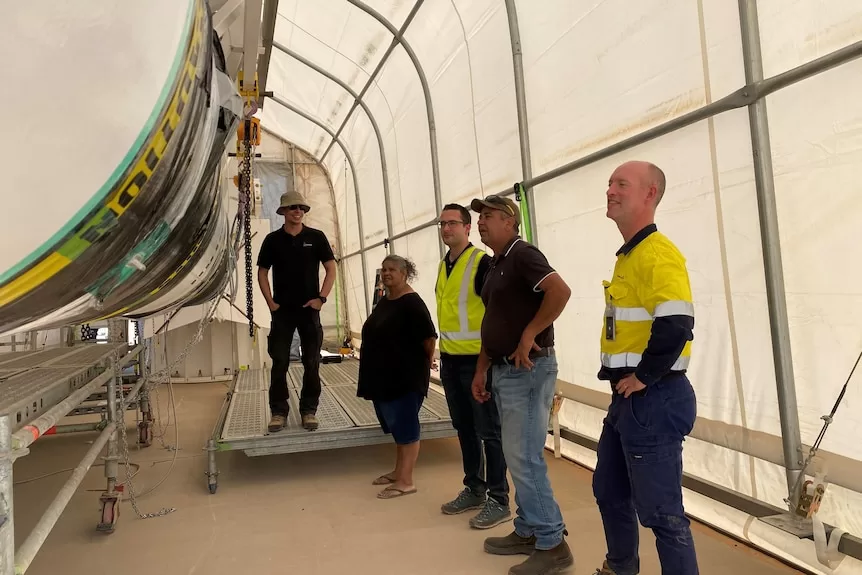- In short: The first commercial rocket at the permanent Koonibba launch pad fired off today.
- South Australian company Southern Launch and the Koonibba community worked for six years to develop the space project with a German company.
- What’s next? Southern Launch is planning more launches later this year.
The small town of Koonibba on the edge of the Nullarbor has become an integral part of the nation’s space industry by launching one of the largest rockets from Australian soil from a private facility today.
The Koonibba community first held talks with South Australian launch company Southern Launch six years ago with plans to develop a launch pad on a wheat paddock on the state’s far west.
The space venture has already brought jobs and educational benefits, culminating in the launch of the 11.5-metre carbon fibre SR75 rocket made by German company HyImpulse.
Koonibba Community CEO Corey McLennan said the collaboration would yield more benefits for the area.
“Overseas customers coming to little old Koonibba, who would have thought that?” Mr McLennan said.
A crowd of locals and VIPs, who travelled to Koonibba from across Australia and Europe, witnessed the historic achievement today.
Southern Launch CEO Lloyd Damp said the launch was significant for the state.
“Hopefully, over the next 12 to 18 months we’ll be able to make space launch an everyday phrase,” Mr Damp said.
Looking forward to the next one
Koonibba Community Aboriginal Corporation chairperson Geraldine Ware said the launch was an incredible achievement for the community and a shining light for First Nations people.
“We had more than 30 people from the community working throughout the campaign and to come together and see it launch was amazing,” Ms Ware said.
“We look forward to the next launch from our launch pad.”
The Light this Candle mission was the inaugural launch attempt of HyImpulse’s SR75 rocket which trialled a hybrid propulsion technology, using solid paraffin fuel, similar to candle wax, and liquid oxygen.
HyImpulse CEO Christian Schmierer said the technology was unique.
“We are basically using the energy of the candle wax to propel the rocket and this is a very innovative system, which no one in the world has ever flown before,” he said.
The rocket will reach an altitude of 60 kilometres in two minutes, travelling at about 1000 kilometres per hour, before parachuting back to Earth landing seven minutes after take off.
The rocket is expected to land 75 kilometres away from the launch pad and will be retrieved by helicopter this weekend for testing.
“During the flight we have a telemetry link and we sample around 300 different sensors in the rocket that tells us the performance .
“So actually what we want is this set of data,” Mr Schmierer said.
The Koonibba space range is the largest in the Southern Hemisphere covering 41,000 square kilometres.
Posted , updated
